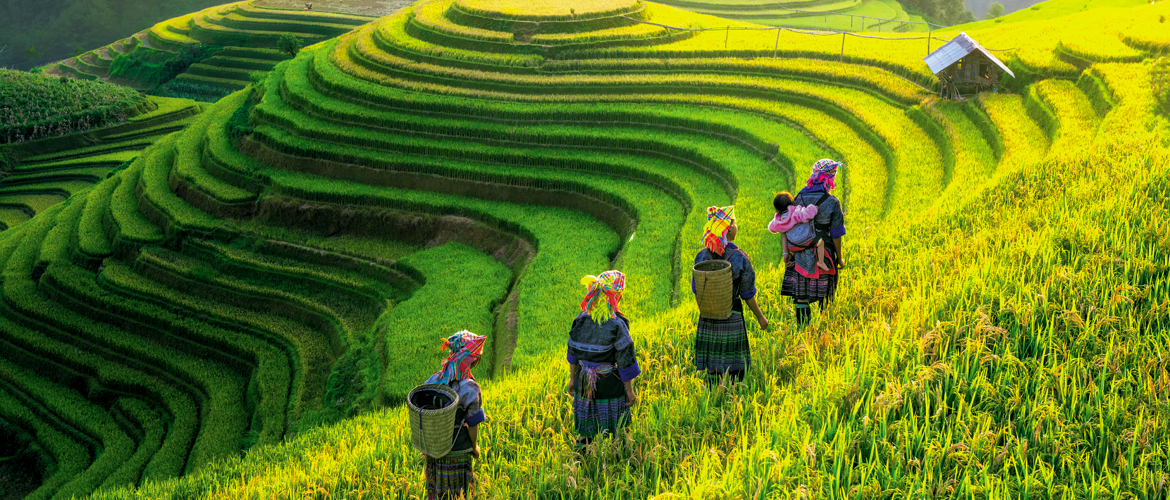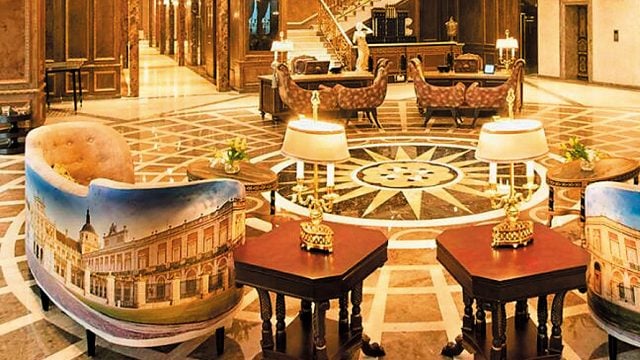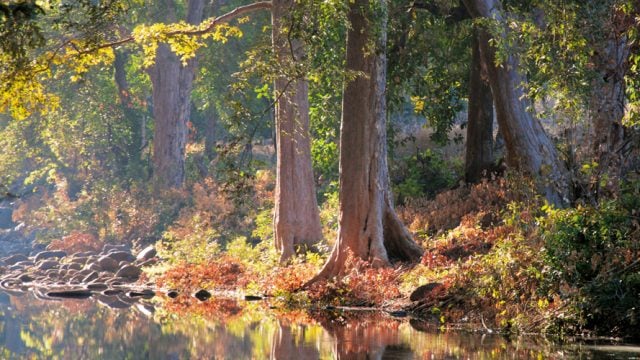Hanoi A grand bridge over the Red River takes you from the spiffy new airport and deposits you

Take a walk in the lush park surrounding the lake on any evening and you’ll get a peek into daily life in this fiercely socialist republic. Couples dangle their legs over the steep embankments and gaze at the illuminated pagoda at the lake’s centre. There’s a lot of dancing, everything from Bollywood to ballroom. Some old-growth trees lean into the water. At one corner of the lake, you’ll spy the Louis Vuitton store. A lot of the two-wheelers zipping around are designer Vespas.

For a city that is a thousand years old, Hanoi has a youthful vibe. Just ask anyone the way to the legendary Beer Corner, a small crossing where the entire planet seems to converge to slake its collective parched throat on some of the cheapest beer there is, right on the street. Not too far away is the Water Puppet Show, which for its jaw-dropping technique and beautiful music is absolutely not to be missed (thanglongwaterpuppet.org/en/). Another popular Hanoi attraction is the Temple of Literature, dedicated to Confucius and the site of Vietnam’s first national university.
A rather more sombre note is struck at the Ho Chi Minh Mausoleum, where you can reverentially shuffle past Uncle Ho’s embalmed body in single file.
Halong Bay

As an experience, Halong Bay serves as a nice change from Vietnam’s great cities. This Unesco World Heritage Site is one of the country’s top attractions and, conveniently, just a few hours drive from Hanoi on a flawless highway. The drive passes some scenic countryside and there’s a nice midway pitstop at a cafeteria-cum-sculpture garden, where, if you are so inclined, you may order a ginormous sculpture or two for your kitchen garden. A small boat transfers you from the cruise terminal to the cruise boat. Then you’re off, through Halong’s surreal topography, with thousands of improbable-looking limestone karsts popping out of the sea all around you. Halong means ‘descending dragon’ after all. There are stops for silver-sand beaches and sprawling caves and jewel-like lakes veiled from view. Meals are all on board, deliciously partial to seafood. For the rest, there are vendors who float by in their small boats just like they do on the Dal in Srinagar. At night, the boats huddle together, as if for comfort, bobbing up and down on the water like giant fireflies. And that’s pretty much it. If you pay a little more, you can get a plusher boat or a pretty-looking junk and some gourmet food. Not too different from the Kerala houseboat experience. But I’ve been hearing good things about Indochina Junk (indochina-junk.com), which, apart from Halong, also offers offbeat trips to the yet untouched Bai Tu Long Bay, just northeast of here. Also, keep in mind that most cruise operators are hardly flag-bearers of eco-friendly tourism practices, so it’s worth doing a little background check and seek out a responsible operator. This fragile ecosystem needs all the TLC it can get.
Ho Chi Minh City

With its trendy cafés and jazz bars, Ho Chi Minh City (HCMC) or Saigon is a bustling metropolis with a contemporary vibe, in sharp contrast to laidback Hanoi. There are numerous architectural and historical sights to take in and these include the Notre Dame Basilica, the Post Office, the Opera House, the Independence or Reunification Palace and the Mariamman Temple. If you hang around the Notre Dame Basilica long enough, you will invariably see a wedding photo shoot in progress. What you can’t miss—indeed, won’t be able to miss—is the frenetic traffic. Indeed, traffic in HCMC takes on a life of its own, and is worth gawking at. (As the guide put it: “Hanoi may be the capital of Vietnam, but HCMC is the capital of motorbikes.”) All shoppers invariably gravitate towards the Ben Thanh Market, HCMC’s own Palika Bazaar, for cheap tourist tat as well as edible attractions like civet coffee and lotus tea, not to mention a nice steaming bowl of pho. There are a couple of malls as well, but if you’ve been to the ones in Singapore and Bangkok, you could easily give these a miss. A dinner cruise on the Saigon River is a great way to take in the city’s skyline. The one building you can’t miss is the Bitexco Tower, a modern landmark that used to be the tallest building in Vietnam but which has now been bested by the Keangnam Hanoi Landmark Tower. If you’re craving a curry, look no further than the fine-dining Tandoor (tandoorvietnam.com). The closest Indian city I can find a parallel to for HCMC is Mumbai. (Hanoi, on the other hand, is more like Kolkata.)
The Cu Chi Tunnels, an intricate web of interconnected underground tunnels used by the Viet Cong, are a popular day trip from HCMC. Most famously, they served as the Viet Cong’s base for 1968’s Tet Offensive. Today, this historical site is well and truly touristified, with the focus firmly on its entertainment value (there’s a shooting range where you can buy rounds and go trigger happy, for one). It’s not the sort of sombre national monument you might have expected, but the visitors aren’t complaining as they cheerfully go up and down the narrow tunnels and passageways, gasping in wonder.
Sa Pa

Set deep in the Hoang Lien Son mountains of northwest Vietnam close to the Chinese border, Sa Pa was established as a hill station by the French in 1922. The views are truly scenic, especially of those distinctive cascading rice terraces. The region is home to as many as eight ethnic minorities, the most well-known of whom are perhaps the Hmong. Today, rampant construction and the arrival of large hotels may have taken some of Sa Pa’s charm away but it’s still very pretty, and a great base for treks into the surrounding countryside. Also known as “the Tonkinese Alps”, the region is home to Phan Si Pang (Fansipan), the highest peak in Indochina (and you can now take a cable car all the way to the top; see fansipanlegend.com.vn/en). In town, the tribal markets are a great place to pick up trinkets and textiles. You can also visit some ethnic villages. Treks to villages like Ta Van and Cat Cat are extremely popular. Just remember that there is an admission fee and permit requirement to enter most of them, but your operator should be able to organise these for you.
Halong Bay
Hanoi
Ho Chi Minh City





